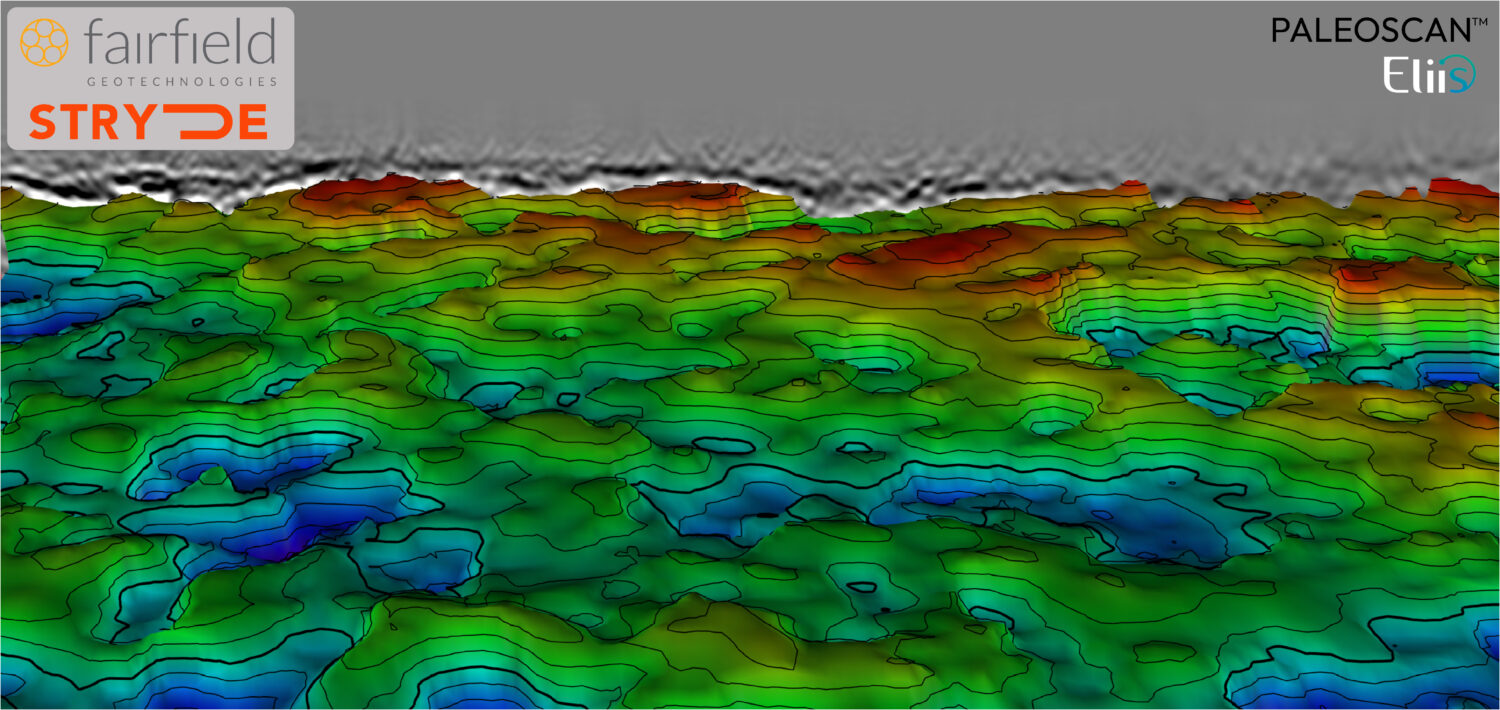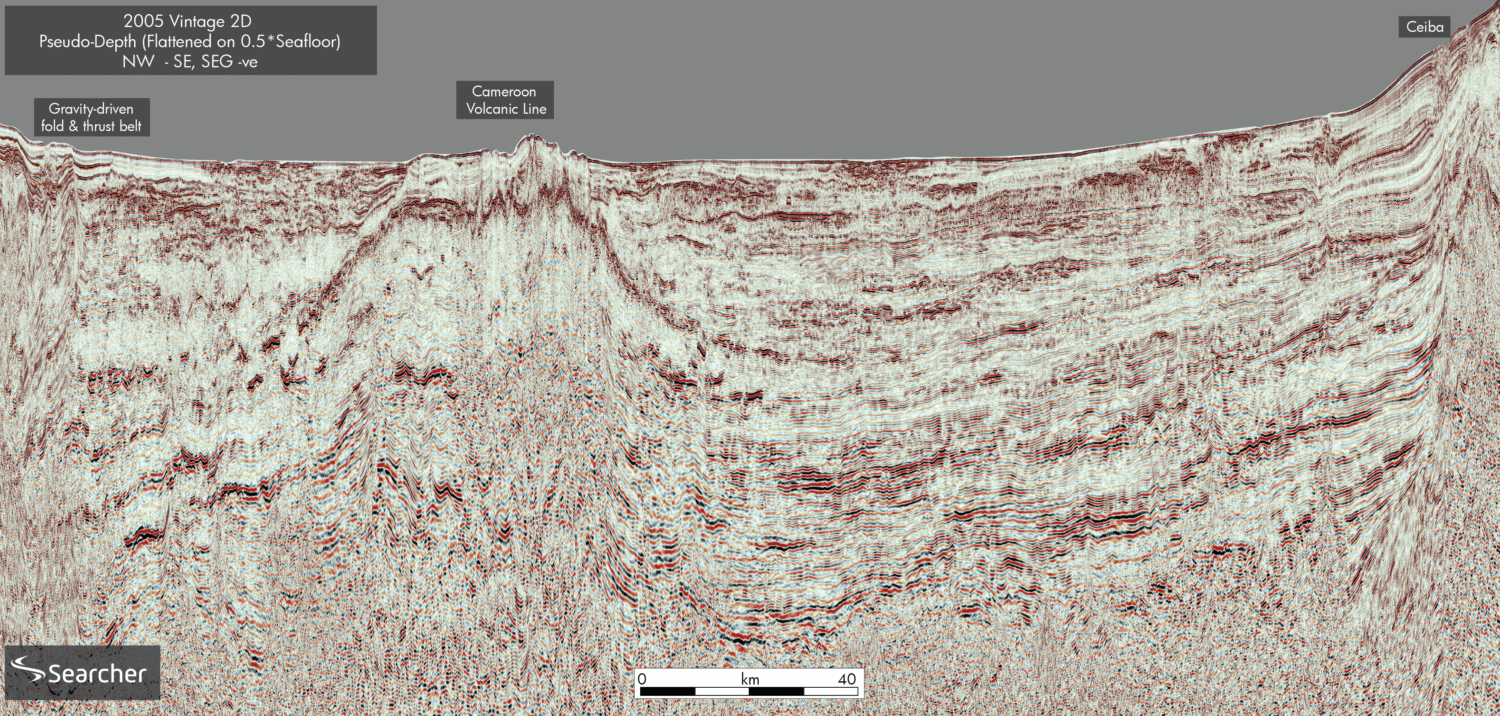
Drifting towards 2019 bid round treasures
Mixed/hybrid deepwater turbiditic-contouritic depositional systems are only just beginning to be understood, but show great potential.
Several prolific discoveries have been associated with hybrid turbidite-contourite systems, of which the most notable is the Rovuma Basin offshore Mozambique (Maba Complex). Another significant hydrocarbon accumulation with clear seismic indications associated with a mixed system is the deepwater confined channel Barra/Moita Bonita complex (>3 Bbo in place) in the Sergipe Basin, Brazil.
Identification of these systems relies on the recognition of a series of diagnostic criteria derived from the integration of available understanding (Sansom, 2018) and comparison with direct observations from well-established proven systems. Hydrocarbon potential evaluation includes the analysis of probable source rocks, reservoir and traps. Potential source rocks can be identified using a systematic frontier basin methodology which integrates plate tectonic reconstruction, paleographic setting, seismic character, any available well and outcrop data, and source rock characterization (Eastwell et al., 2018). To de-risk reservoir presence and quality, both depositional system features and seismic character can be used. The trapping mechanism is usually provided by the depositional characteristics of the hybrid system.
Angoche Basin, offshore Mozambique
To the south of ENI’s over 85 Tcfg Mamba Complex lies the Angoche Basin. Here, longoffset 2D seismic data acquired in 2017/2018 has revealed a series of hybrid turbidite-contourite systems with confined to weakly-confined channels, as well as a series of migrating channel complexes, all flanked by impressive drift mounds. The model put together by Fonnesu (2013) shows how the gravity flow moves sediment down the turbidite channel while the drift current winnows the channel in a direction perpendicular to the coast, depositing a unilateral drift mound on the flank of the channel. Counter-intuitively, the channels migrate against the current direction, which might be a characteristic of more contouritedominated systems. This process results in enhanced reservoir quality (net/gross up to 90%) in the channels and an overlying effective seal provided by the fine-grained drift mounds.
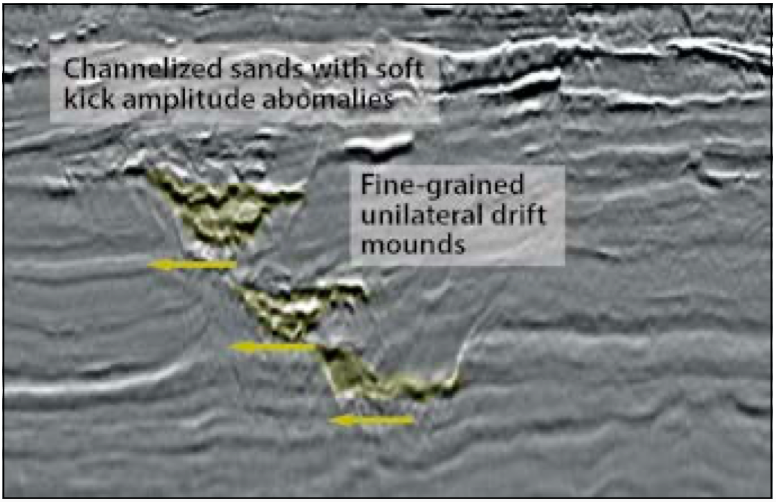
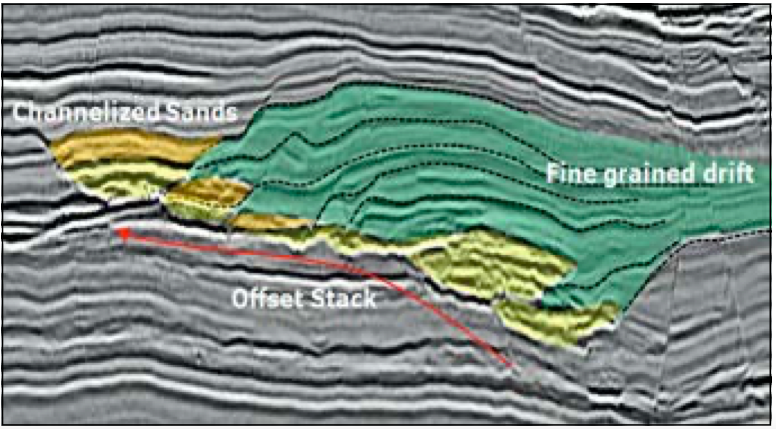
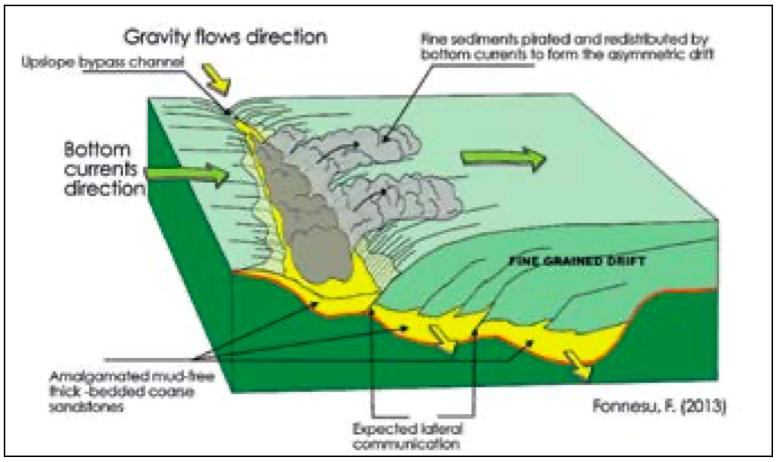
The block nomination process for the next bid round offshore Mozambique will commence later in 2019 and the significant potential indicated on the new seismic data, together with clear indications of present-day oil generation, should make the Angoche Basin very competitive.
Sergipe: multibillion barrel hybrid system
The Sergipe Basin on the north-eastern coast of Brazil has seen an astonishing rejuvenation in exploration effort and oil success. In 2010 Petrobras found the Barra Field and subsequently made several more significant discoveries in Upper Cretaceous to Lower Tertiary turbidite channel sandstones in the deeper water of the basin, with total reserves of over 3 Bbo. Despite clear seismic indications that contourite drift features seem to play a key role in the success of this petroleum system, these have received little attention.

A depth seismic section through one of the Barra wells shows a clear contourite drift downdip of the confined channel, indicating the presence of drift currents during the deposition of this mixed system. It is possible that the winnowing of this channel by perpendicular drift currents is largely responsible for the excellent reservoir quality associated with these sands.
The Sergipe Basin currently has several offshore blocks on offer through the 1st Open Door Bid Round. There are indications of a widespread hybrid system extending into the open blocks on offer. Understanding the distribution and nature of these depositional systems is key in the evaluation of these open blocks.
Argentina Basin: a turbidite-dominated hybrid system
An extensive long-offset 2D seismic survey was acquired in 2017–2018, mainly to assist in the evaluation of the very successful first offshore license round in Argentina. A detailed source rock analysis identified a high quality potential source with sufficient burial depth to generate hydrocarbons. This source rock is overlain by numerous Cretaceous and Cenozoic stacked, confined turbidite channel complexes influenced by drift currents. One of these systems shows an AVO-supported high amplitude anomaly which can be mapped over a very large area. The system is very similar to Sergipe, but extends over 5,700 km2, three times the size of the Sergipe anomaly, and indicates that there could be an accumulation holding as much as 9 Bbo.
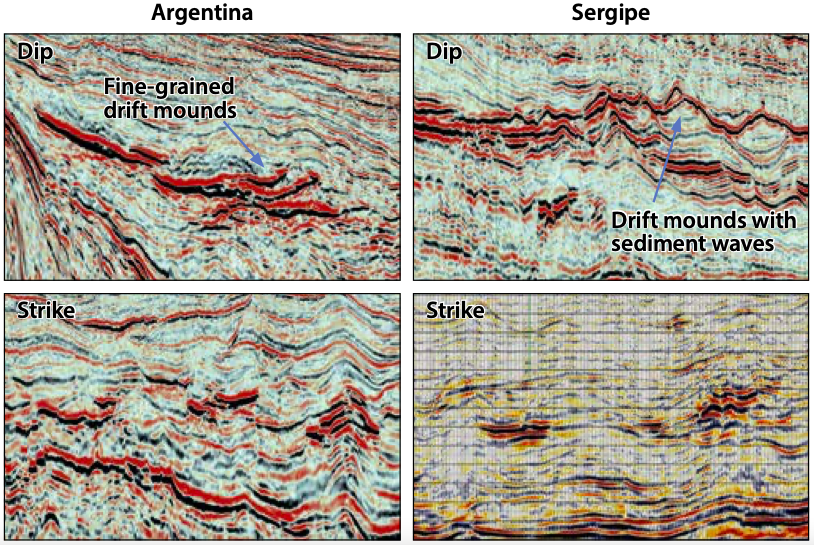
Deepwater Depositional Systems: Great Potential for Hydrocarbon Exploration
Mixed/hybrid deepwater turbiditic-contouritic depositional systems, often located in relatively frontier basins, are only just beginning to be understood. Modern 2D seismic is proving to be an essential tool in identifying these systems and performing a hydrocarbon potential evaluation.
2019 has already seen significant discoveries in the deep water and this year’s bid rounds are ideally placed to target these hybrid depositional systems with already proven success, offering a great future exploration opportunity.
Further reading on deepwater oil and gas exploration
Huge Hydrocarbon Potential in Undrilled Southern Santos Basin
Cian O’Reilly, James Keay, Jianli Song, Griselda Martinez, Seung Yoo Taejong Kim, Eric Newman and Pedro Zalan; TGS
The hydrocarbon prospectivity of the deepwater outboard Santos Basin is revealed by new 3D seismic.
This article appeared in Vol. 16, No. 4 – 2019
Deepwater Oil and Gas Exploration in Frontier Acreage
Andy Alvey, Alan Roberts and Nick Kusznir; Badley Geoscience Ltd.
Cost-effective screening of frontier acreage is an essential early part of any deepwater exploration strategy at continental margins.
This article appeared in Vol. 15, No. 4 – 2018
Hydrocarbon Prospectivity in Northern Argentina
Hannah Kearns, Karyna Rodriguez & Steve DeVito; Spectrum
State-of-the-art seismic acquisition technology and advanced geological concepts, unlock new hydrocarbon potential for offshore Argentina.
This article appeared in Vol. 15, No. 2 – 2018
Foz do Amazonas Basin: Latest Exploration Enhances Prospectivity
Lauren Penn, Paolo Esestime and Karyna Rodriguez, Spectrum
New 2D seismic data is unlocking the hydrocarbon potential of the deepwater part of this underexplored north Brazilian basin.
This article appeared in Vol. 12, No. 3 – 2015


